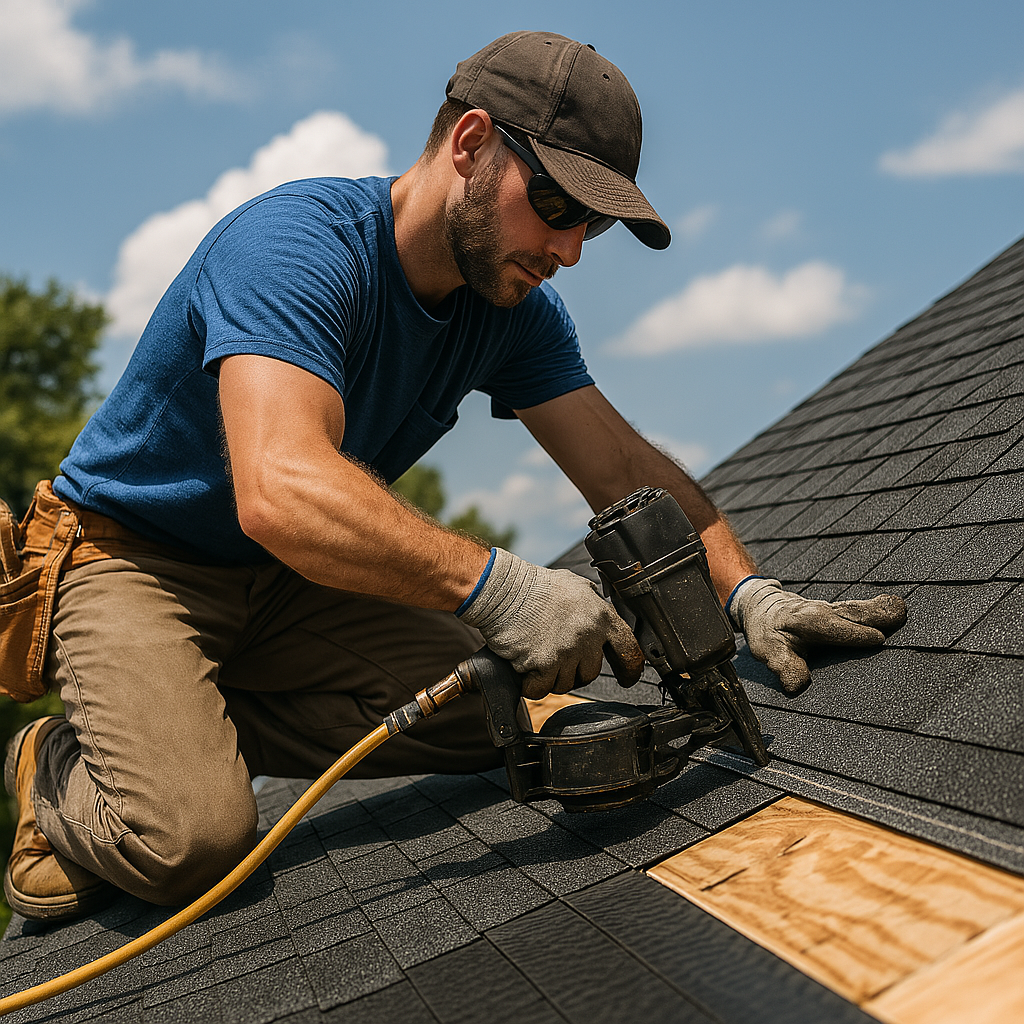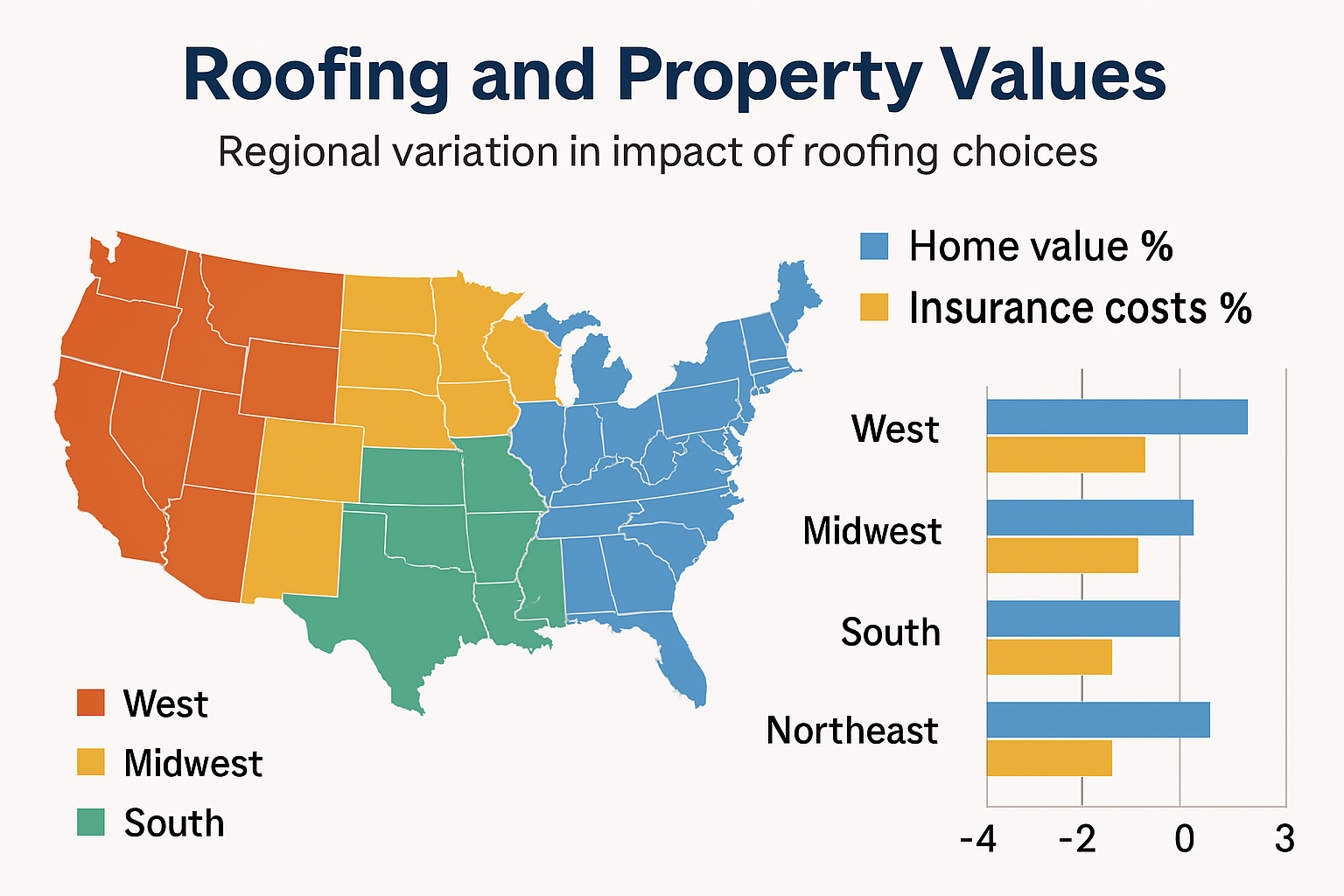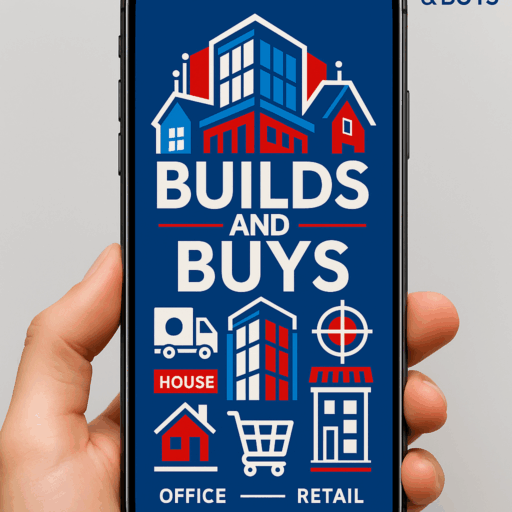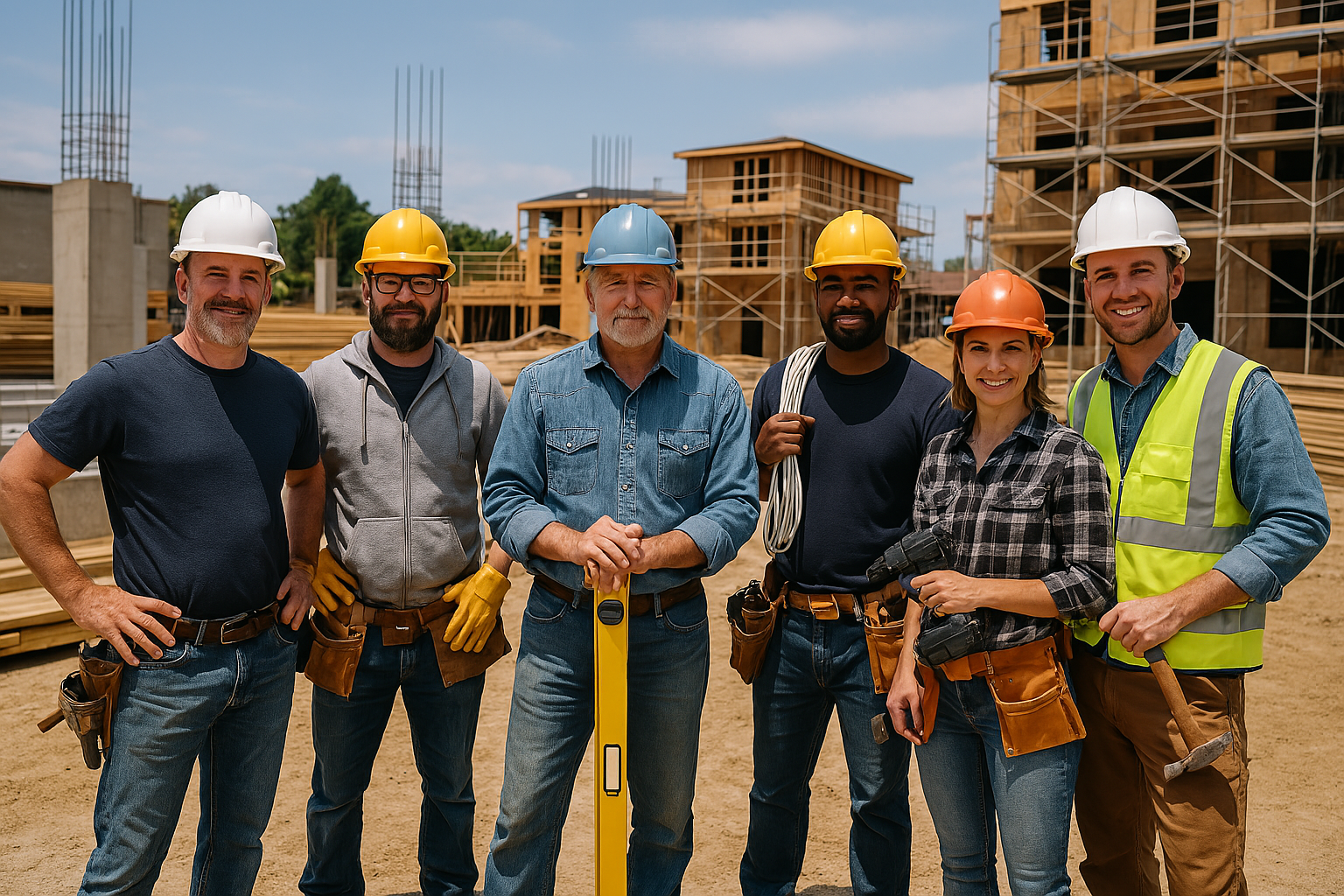
Check out our app!
Explore more features on mobile.
Roofing Systems for Real Estate Investors: A Comprehensive Investment Analysis
A property’s roofing system represents both one of the most significant maintenance investments and a critical component for structural protection. For real estate investors, understanding roofing options, performance metrics, and lifecycle costs is essential for making informed decisions that balance upfront expenses with long-term returns. This comprehensive guide examines roofing systems through an investor’s lens, providing research-backed insights to optimize your roofing decisions.

[Image: Visual comparison of residential roofing materials with key characteristics]
Strategic Roofing Considerations for Real Estate Investors
Roofing decisions impact multiple aspects of real estate investment performance, from immediate capital expenses to long-term maintenance costs, insurance premiums, and resale value. According to the National Association of Realtors, a new roof recovers approximately 60-70% of its cost at resale, while poorly maintained roofing can reduce property values by 10-15%.
Key strategic considerations for real estate investors include:
- Investment timeline alignment – Matching roofing lifespan to your intended holding period
- Climate appropriateness – Selecting materials optimized for local weather conditions and natural hazards
- Market expectations – Understanding what roofing types are standard or premium in your target market
- Energy efficiency impact – Factoring in how roofing choices affect heating and cooling costs
- Insurance considerations – Recognizing how roofing choices impact property insurance rates
The National Roofing Contractors Association reports that approximately 30% of all residential roofs are replaced prematurely due to improper installation or material selection. For investors, this represents a significant risk of unexpected capital expense that proper planning can mitigate.
Roofing Materials Analysis: Performance, Longevity, and Investment Value
Each roofing material offers a distinct profile of upfront costs, maintenance requirements, longevity, and market perception. Understanding these factors helps investors match roofing choices to specific investment strategies and regional factors.
| Roofing Material | Expected Lifespan | Cost Range (per sq ft) | Best Investment Application |
|---|---|---|---|
| 3-Tab Asphalt Shingles | 15-20 years | $1.50-$3.50 | Rental properties; short-term holds; budget renovations |
| Architectural Shingles | 25-30 years | $3.50-$5.50 | Mid-market properties; medium-term investments |
| Metal Roofing | 40-70 years | $5.00-$14.00 | Long-term holds; severe weather regions; energy-efficient builds |
| Clay/Concrete Tile | 50+ years | $8.00-$20.00 | Premium properties; specific architectural styles; hot climates |
| Slate | 75-100+ years | $10.00-$30.00 | Luxury properties; historic renovations; legacy investments |
| Wood Shakes/Shingles | 20-40 years | $6.50-$14.00 | Rustic/premium aesthetic; specific architectural styles |
| Synthetic Roofing | 30-50 years | $6.00-$12.00 | Premium aesthetic with lower weight; balanced investment approach |
Regional Considerations for Material Selection
Local climate conditions strongly influence optimal roofing material selection. According to the Insurance Institute for Business & Home Safety, regionally-appropriate roofing choices can significantly impact longevity and performance:
- High wind regions – Impact-resistant asphalt shingles or metal roofing with enhanced fastening systems show 55% better performance in hurricane-prone areas
- Heavy snowfall areas – Metal roofing with standing seams prevents ice dam formation and handles snow loads more effectively than traditional shingles
- Wildfire-prone regions – Class A fire-rated materials (slate, concrete tile, or specific metal systems) are essential and may be required by local building codes
- Hot, sunny climates – Cool roof technologies with solar reflectance indexes above 29 reduce cooling costs by 7-15% according to Department of Energy studies
- High rainfall areas – Steeper pitch roofs with enhanced underlayment systems minimize leak risks in regions receiving more than 40 inches of annual rainfall
Warranty Considerations
Roofing warranties vary significantly across manufacturers and installation companies. The National Roofing Contractors Association highlights several key factors investors should evaluate:
- Material vs. workmanship coverage – Material warranties (typically 20-50 years) only cover manufacturing defects, while workmanship warranties (1-10 years) cover installation issues
- Prorated vs. non-prorated terms – Non-prorated warranties provide greater value but typically cost more upfront
- Transferability provisions – Transferable warranties enhance resale value but may require formal transfer procedures and fees
- Exclusion clauses – Maintenance requirements, ventilation specifications, and installation methods that can void warranty coverage
- Company longevity – The projected stability of the manufacturer and installer to honor long-term warranties
Professional Roofing Installation: Quality Markers and Process Overview
Installation quality significantly impacts roofing performance, regardless of material selection. The Roofing Industry Alliance for Progress reports that approximately 80% of premature roofing failures stem from installation issues rather than material defects. Understanding the professional installation process helps investors evaluate contractor proposals and manage quality control.
1. Property-Specific Assessment and Planning
Professional installation begins with thorough preparation and assessment.
- Structural evaluation – Assessing if the roof structure can support the selected material’s weight
- Ventilation analysis – Calculating proper attic ventilation requirements based on local building codes
- Existing roofing examination – Determining whether tear-off is necessary or if overlayment is permissible
- Measurement precision – Accurate roof measurements to minimize material waste and estimate labor
- Flashing and drainage planning – Identifying critical water management areas requiring special attention
2. Underlayment and Moisture Barrier Installation
The water-resistant layer beneath visible roofing materials provides essential backup protection.
- Self-adhering ice and water shield – Applied at eaves, valleys, and penetrations as primary leak prevention
- Synthetic vs. felt underlayment – Selection based on local climate conditions and material compatibility
- Proper overlapping techniques – Following manufacturer specifications for water shedding
- Drip edge installation – Critical for directing water into gutters and protecting fascia boards
- Valley preparation – Enhanced protection in high-water-volume areas with additional underlayment
3. Primary Roofing Material Application
Material-specific installation techniques significantly impact performance and appearance.
- Starter course installation – Critical for wind resistance and clean edge appearance
- Fastening system specificity – Proper nail type, placement, and quantity according to material requirements
- Pattern alignment – Following manufacturer guidelines for shingle or panel arrangement
- Expansion allowance – Accommodating material movement with temperature fluctuations
- Cut quality – Precision cutting for proper fits at edges, valleys, and penetrations

4. Flashing and Penetration Sealing
Proper flashing around roof penetrations and transitions is critical for leak prevention.
- Chimney and wall flashings – Step flashing integrated with siding or masonry
- Vent pipe collars – Properly sized and sealed pipe penetrations
- Valley treatment – Open, closed, or woven valley methods based on roof design and material
- Skylight and dormer integration – Specialized flashing kits for larger penetrations
- Material compatibility – Preventing galvanic corrosion between dissimilar metals
5. Ventilation System Installation
Proper attic ventilation extends roof life and improves energy efficiency.
- Ridge vent application – Continuous exhaust ventilation along the roof peak
- Intake vent configuration – Soffit or fascia vents creating proper airflow paths
- Balanced system design – Equal intake and exhaust capacity for optimal airflow
- Baffle installation – Maintaining clear airflow paths from eave to ridge
- Ventilation calculations – Meeting or exceeding building code requirements (typically 1:150 or 1:300 ratio)
6. Final Inspection and Cleanup
Professional installation concludes with thorough quality control.
- Visual inspection protocol – Systematic examination of installation quality and completeness
- Fastener verification – Confirming proper nail placement and depth
- Flashing seal checks – Testing critical water-diversion components
- Ventilation confirmation – Verifying unobstructed airflow paths
- Material cleanup – Thorough removal of debris and proper disposal of old materials
Cost Analysis: Initial Investment vs. Lifecycle Value
Understanding the total cost of ownership for different roofing systems helps investors make financially sound decisions. According to Remodeling Magazine’s Cost vs. Value Report, roofing represents one of the few home improvements that can recover 60-70% of its cost upon resale, making it both a functional necessity and a value-preservation investment.
| Cost Component | Factors Affecting Cost | Investor Considerations |
|---|---|---|
| Material Costs | Material type, quality tier, manufacturer warranty | Match material longevity to investment horizon; consider regional performance factors |
| Labor Costs | Roof complexity, material difficulty, regional labor rates | Higher labor quality typically yields better longevity; complexity dramatically impacts costs |
| Tear-off Expenses | Number of existing layers, material type, disposal fees | Complete removal often provides longer warranties and reveals hidden damage |
| Structural Repairs | Building age, previous leak history, ventilation adequacy | Budget contingency of 10-15% for unknown decking issues in older properties |
| Underlayment & Accessories | Climate requirements, code specifications, warranty requirements | Premium components often deliver disproportionate performance benefits |
| Ventilation Upgrades | Current system adequacy, attic configuration, local requirements | Proper ventilation extends roof life by 20-25% and reduces energy costs |
| Ongoing Maintenance | Material type, tree coverage, climate severity | Low-maintenance options often justify higher initial investment for rental properties |
Lifecycle Cost Analysis
The Roofing Alliance for Progress provides data showing that initial material cost typically represents only 60-70% of lifetime roofing expenses. When factoring installation, maintenance, repair, and eventual replacement, the true cost hierarchy often differs from initial price rankings.
- Annual cost approach – Dividing total lifecycle costs by expected years of service provides true cost comparison
- Maintenance requirements – Some materials require regular professional maintenance while others are virtually maintenance-free
- Energy impact consideration – Cool roof technologies can reduce cooling costs by 7-15% in warm climates
- Insurance premium effects – Impact-resistant materials can reduce insurance premiums by 5-30% in hail-prone regions
- End-of-life factors – Some materials are recyclable or have salvage value while others incur disposal fees
Cost Variation Factors
The National Roofing Contractors Association identifies several factors that create significant cost variations even for identical materials:
- Roof complexity multiplier – Multiple facets, steep pitches, and numerous penetrations can increase costs by 25-40%
- Regional pricing differences – Labor costs vary by up to 60% between major metropolitan areas
- Seasonal timing – Off-season installation (late fall/winter in northern regions) often secures 5-15% discounts
- Material availability – Supply chain disruptions can create significant price volatility for specific materials
- Building access factors – Difficult access properties require additional equipment and safety measures
Market Impact: How Roofing Affects Property Valuation
Research Insight: Roof Condition and Time-on-Market
A study by the National Association of Realtors found that homes with visibly deteriorated roofing spent an average of 42 days longer on market compared to similar homes with new or well-maintained roofs. Additionally, properties with visible roof damage typically received offers 3-7% below listing price.
Key finding: Properties with new roofing using appropriate materials for the neighborhood standard not only sold faster but often commanded slight premiums (1-3%) over comparable properties with aging but functional roofs.
Market-Specific Roofing Expectations
Regional preferences and expectations significantly impact how roofing choices affect property valuation:
- Neighborhood conformity premium – Roofing materials that align with neighborhood standards typically sell faster than outlier choices
- Regional material preferences – Clay tile in the Southwest, metal in rural settings, slate in historic districts
- Climate-appropriate selections – Impact-resistant materials in hail zones, fire-resistant options in wildfire regions
- Architectural compatibility – Materials that complement the property’s architectural style enhance curb appeal and marketability
- Green building certifications – Energy Star rated or cool roof technologies add value in environmentally-conscious markets
Financing and Insurance Implications
Roof condition and material selection impact both financing availability and ongoing insurance costs:
- Lender requirements – Many lenders require roof certification showing 3-5 years of remaining life for mortgage approval
- Insurance premium discounts – Class 4 impact-resistant roofing can reduce premiums by 5-30% in eligible regions
- Escrow holdbacks – Properties with marginal roofs often face escrow holdbacks until replacement is completed
- Wind mitigation credits – In hurricane-prone regions, specific roofing attachment methods can significantly reduce insurance costs
- Warranty transferability value – Remaining years on transferable manufacturer warranties add calculable value to properties

[Image: Regional analysis of roofing material impact on property values and insurance rates]
Disclosure and Inspection Considerations
Roof condition represents a significant factor in property transactions:
- Inspection focus area – Roofing typically receives extensive attention during buyer inspections
- Disclosure requirements – Previous leaks or repairs must be disclosed in most jurisdictions
- Negotiation leverage – Roof issues are commonly used to justify price reductions or seller concessions
- Documentation value – Records of professional installation and maintenance enhance property value
- Certification options – Professional roof certifications can mitigate buyer concerns and expedite transactions
Builds and Buys Approach: Strategic Roofing Framework
At Builds and Buys, we’ve developed a systematic approach to roofing decisions that balances immediate costs with long-term investment protection:
Step-by-Step Builds: Roofing Excellence Strategy
Our comprehensive approach to new construction and replacement roofing:
- Investment horizon matching – Aligning material longevity with intended property holding period
- Regional optimization protocol – Selecting materials specifically suited to local climate conditions
- Contractor qualification system – Vetting installation professionals based on experience and warranty history
- Component integration planning – Ensuring roofing system works harmoniously with insulation and ventilation
- Documentation standards – Creating comprehensive records that enhance property marketability
Step-by-Step Buys: Roofing Assessment Framework
For investors evaluating existing properties, our inspection framework provides critical insights:
- Condition evaluation protocol – Systematic assessment methodology for existing roofing
- Remaining lifespan estimation – Calculating useful years remaining based on material and condition
- Hidden damage identification – Recognizing signs of underlying issues before they become major problems
- Repair vs. replace analysis – Determining when repairs are sufficient versus full replacement
- Negotiation leverage points – Using roofing condition to adjust purchase offers appropriately
Step-by-Step Invest: Roofing Financial Optimization
Our investment strategies help allocate roofing resources for maximum financial performance:
- Lifecycle cost calculation – Analyzing true long-term costs beyond initial installation
- Insurance optimization strategy – Selecting materials that qualify for premium discounts
- Energy efficiency analysis – Calculating ROI for cool roof and insulation enhancements
- Warranty value assessment – Evaluating the real financial value of manufacturer guarantees
- Tax benefit identification – Recognizing potential energy efficiency tax credits and incentives
Essential Inspection and Maintenance Checklist
Regular inspections and maintenance significantly extend roof lifespan and protect your investment. According to the National Roofing Contractors Association, properly maintained roofing systems can achieve 25-30% longer functional lifespans compared to neglected systems.
Seasonal Inspection Checklist
- ☐ Check for loose, damaged, or missing roofing materials
- ☐ Inspect flashing around chimneys, vents, and other penetrations
- ☐ Examine valleys and other areas where water concentrates
- ☐ Look for signs of previous leaks or water stains in attic
- ☐ Verify that attic ventilation intakes and exhausts are unobstructed
- ☐ Check gutters and downspouts for proper attachment and function
- ☐ Remove debris accumulation from roof surface and drainage systems
- ☐ Look for signs of animal intrusion or damage
Material-Specific Maintenance
- ☐ Asphalt Shingles: Remove any moss or algae growth; check for curling or blistering
- ☐ Metal Roofing: Inspect for scratches or corrosion; check fasteners for tightness
- ☐ Tile Roofing: Look for cracked, chipped, or slipped tiles; check underlayment at exposed areas
- ☐ Wood Shakes: Monitor for moss growth or rot; treat with preservatives as recommended
- ☐ Flat/Low-Slope: Clear drains and scuppers; check membrane for bubbling or separation
- ☐ Slate: Look for cracked or loose slates; inspect flashings carefully
Post-Weather Event Inspection
- ☐ After high winds: Check for lifted shingles or loose metal panels
- ☐ After hailstorms: Look for dimpling or granule loss on asphalt shingles
- ☐ After heavy snow: Monitor for ice dam formation and associated leakage
- ☐ After heavy rain: Check attic for any signs of water intrusion
- ☐ After nearby tree work: Remove any fallen branches or debris
- ☐ After contractor work on roof: Verify all penetrations are properly sealed
Documentation for Investment Protection
- ☐ Maintain records of all roofing installations, including material specifications
- ☐ Keep copies of manufacturer and workmanship warranties
- ☐ Document all professional inspections with photos and written reports
- ☐ Record all maintenance and repairs with dates and contractor information
- ☐ Store information about special treatments or coatings applied
- ☐ Save receipts for any warranty-related services or materials
Discover more essential real estate investment strategies with our comprehensive guides on Step-by-Step Builds, Step-by-Step Buys, and Step-by-Step Invest.
Real Estate News And Knowledge
Stay informed with the latest trends, insights, and updates in the real estate world.
Your Tools
Access your tools to manage tasks, update your profile, and track your progress.
Collaboration Feed
Engage with others, share ideas, and find inspiration in the Collaboration Feed.





